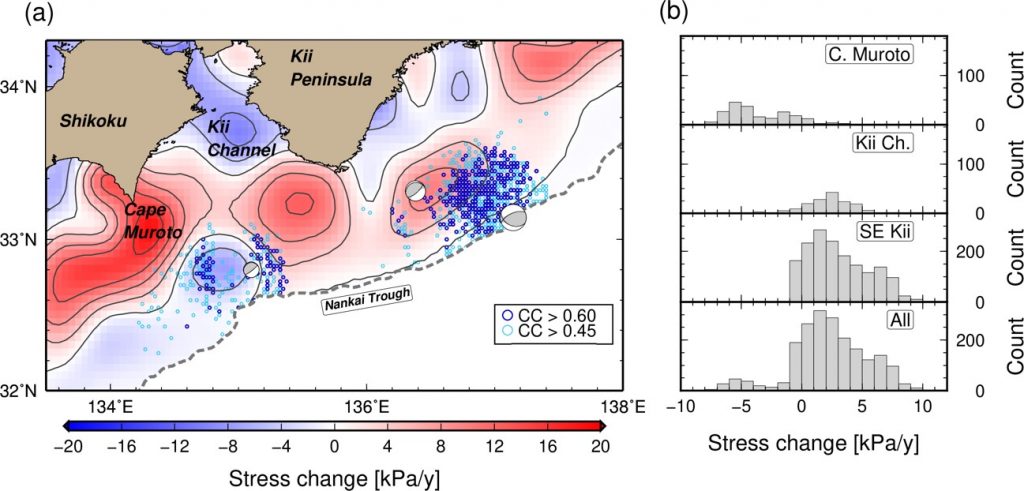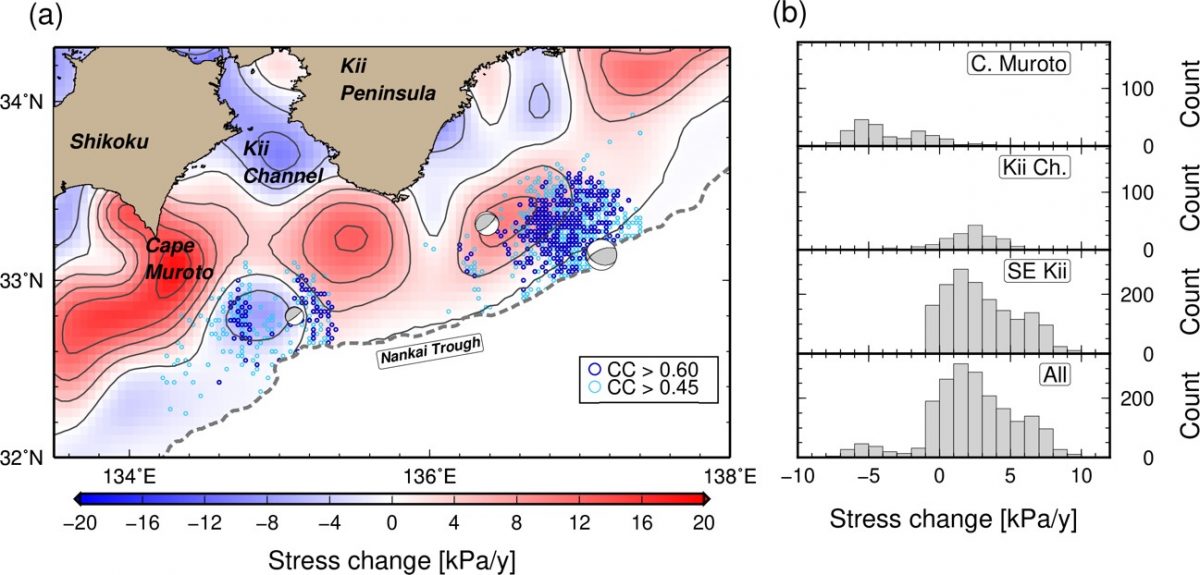S. Takemura1, A. Noda2, T. Kubota2, Y. Asano2, T. Matsuzawa2 and K. Shiomi2 (2019). Geophysical Research Letters, 46 (21), 11830-11840, doi:10.1029/2019GL084666
1ERI Univ. Tokyo, 2NIED
Shallow slow earthquakes with rupture speeds between those of regular earthquakes and stable sliding often occur in the shallower extents of expected megathrust rupture zones. Such shallow slow earthquakes are useful for monitoring the slip behavior of shallow plate boundaries. The spatiotemporal variations of shallow slow earthquakes are related to tectonic characteristics including stress accumulation, friction properties, and the presence of pore fluids. To investigate the spatiotemporal variations of shallow slow earthquakes occurring along the Nankai Trough, the activities of shallow very low frequency earthquakes (SVLFEs) were examined using template matching and cross-correlation relocation analysis. It was found that activity patterns of SVLFEs differed in each analyzed segment due to the different structural characteristics of the shallow Philippine Sea Plate boundary. A detailed spatial distribution revealed that SVLFEs tended to cluster or migrate in the regions surrounding the boundary stress accumulation peaks on the Philippine Sea Plate boundary. The obtained results suggest that shallow slow earthquakes occur and migrate to release accumulated stress in transitional regions between high-strength (strongly locked) and low-strength (stable sliding) zones on the shallow plate boundary.
The SVLFE detection catalog in this study is available from the GRL website (https://doi.org/10.1029/2019GL084666) or “Slow Earthquake Database” (http://www-solid.eps.s.u-tokyo.ac.jp/~sloweq/).



